Boiling Point behind the scenes: from one-shot film to small-screen series
Director of Boiling Point, Philip Barantini, on keeping the intimacy of a scene alive
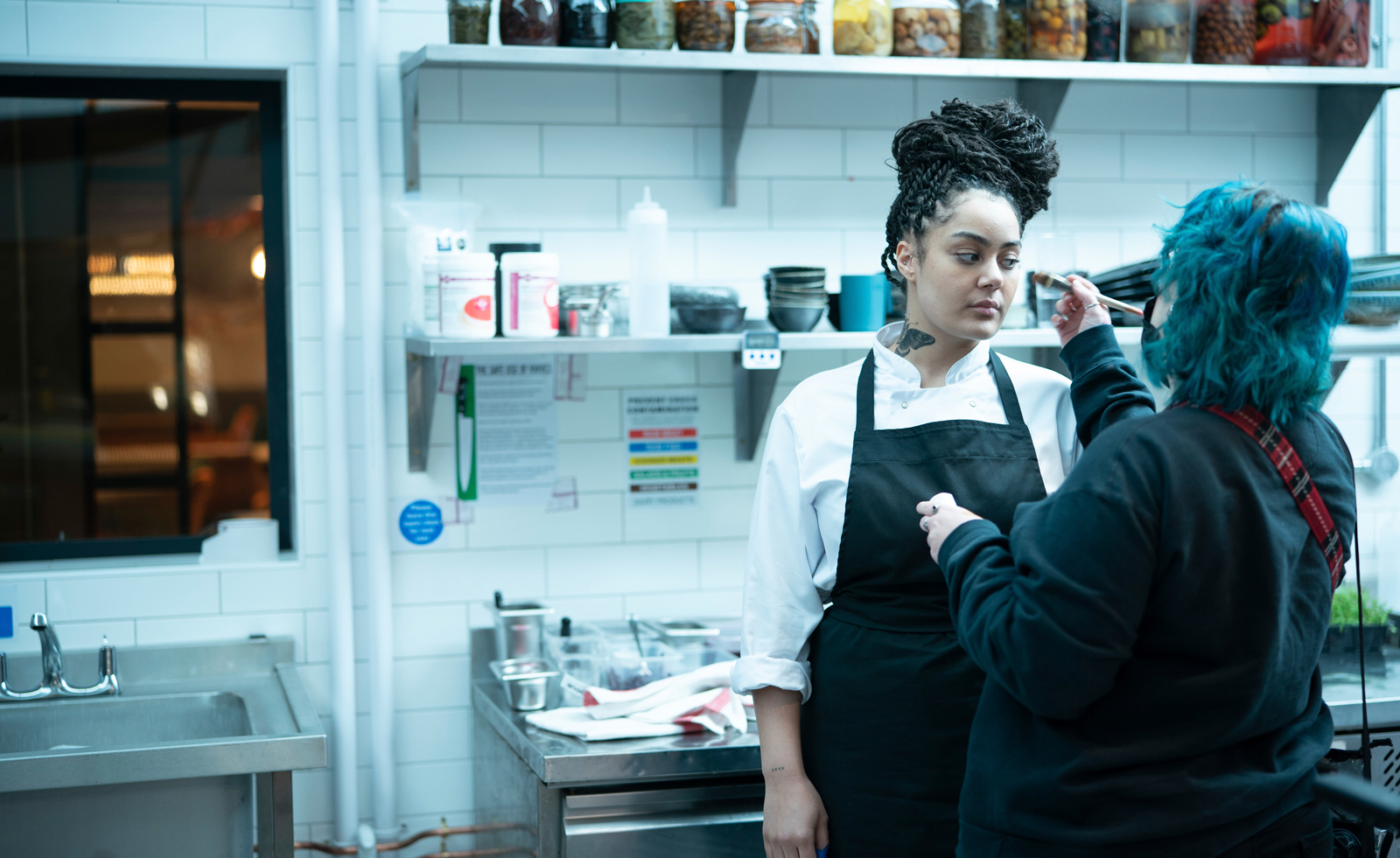
One-shot feature film Boiling Point garnered acclaim upon its release in 2021. Now, as it is reinterpreted in a new format and commissioned as a BBC series, director Philip Barantini talks us through the challenges of going from the big to the small screen with a much-loved format.
Behind the scenes of Boiling Point with Philip Barantini
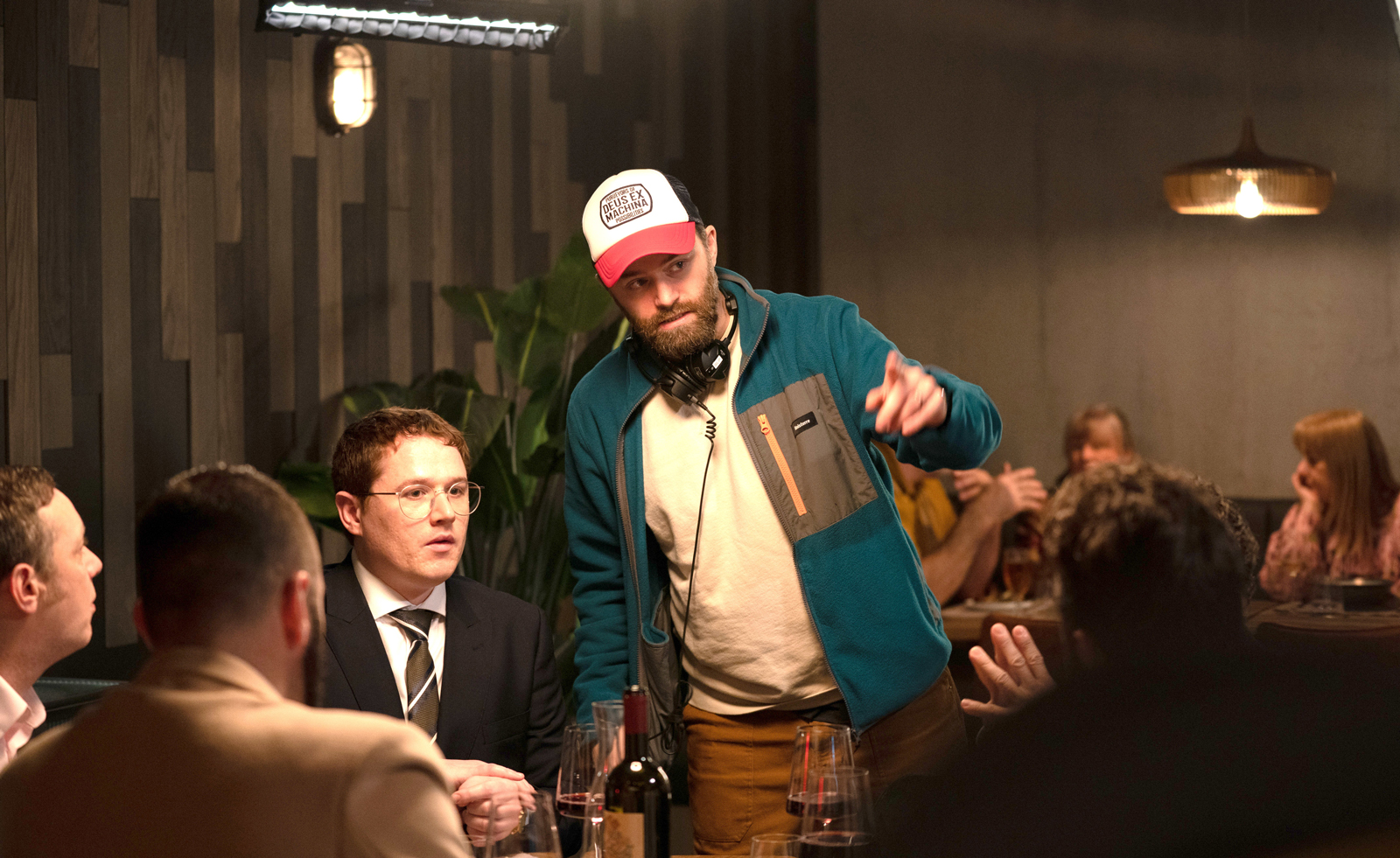
Liam Astrid (Joel MacCormack) and Philip Barantini (Director). Behind the scenes Episode Number: 1
Wallpaper*: What has been particularly difficult in translating the Boiling Point concept to the small screen?
Philip Barantini: The main challenges of translating onto the small screen were maintaining the integrity of the feature film and the feelings that the one-shot created, without doing it as a one-shot. There is an 11-minute one-shot at the beginning of episode one, along with lots of long takes throughout the series; however, keeping that same visceral energy throughout was important but also tricky at times. It was essential to ensure we could be quite free with the camera and with the actors.
W*: How does the construction of a scene differ when you have less time to play with?
PB: The construction of a scene when you have less time means you have to think on your feet a bit more – you must be open to any changes and compromises and allow yourself to be spontaneous. Time is everything on a set because you’re shooting a lot of scenes, so you’ve got to be flexible and ready for things to be cut.
My cinematographer (Matt Lewis) and I always walk onto the set first thing in the morning before anybody else and work out the scene and the blocking. We then bring the actors in, talk it through with them and then we play. If an actor doesn’t feel like they need to walk where you want them to walk or stand where you want them to stand and they think something else works, then you’ve got to be open to their input because it needs to come from the actors as well. Unless it’s a very technical thing and they must stand in that position, then it’s kept open to suggestions and collaborations. Generally, on my sets, I don’t have anything set in stone – it’s all mapped out, but it’s always open to change.
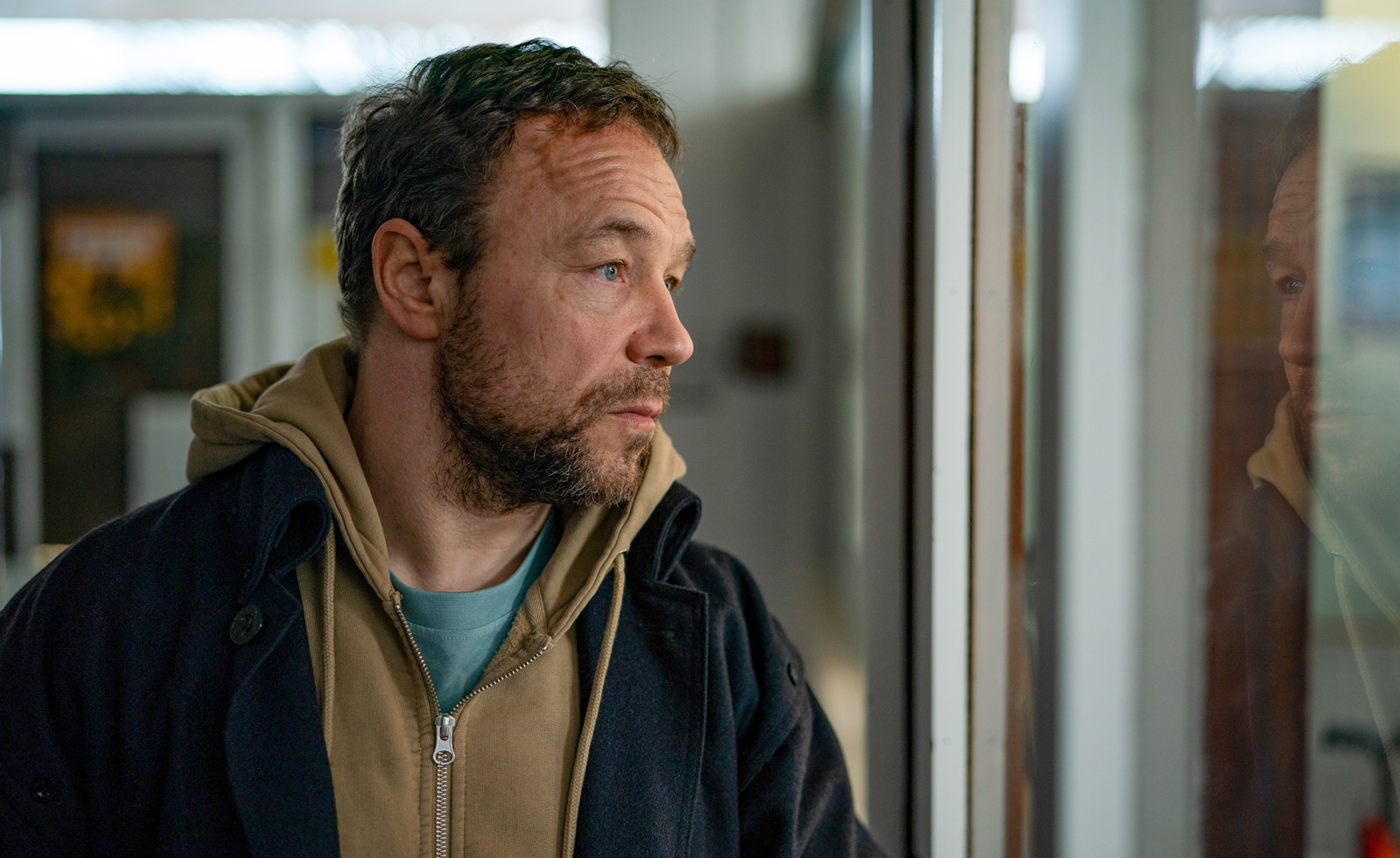
Andy (Stephen Graham)
W*: With a one-shot scene, there is a greater element of trust with the actors. How closely do you work with them on the scene, and to what extent do you like them to improvise?
PB: With a one-shot scene, there is absolutely a greater element of trust with the actors. It all starts at the audition stage – or the meeting stage when you are meeting actors for the first time. I talk through my process and how I like to work and see if they can adapt to it. For me, acting is reacting – and it’s all about listening.
We have a script, but I tend to use the script as a blueprint and tell the actors to understand the situation they’re in, and the scene, but be completely vulnerable, open, and ready for any eventuality. Anything can happen in that moment, just like anything can happen in life. It’s about bringing things to life and making things feel real, so putting my trust in the actors and actors putting their trust in me… it’s a two-way thing and it must be a two-way thing otherwise it’s never going to work.
Collaboration and improvisation are huge parts of how I work and how I like to direct. At the same time, there’s a lot of work that has been done prior to coming on set and improvising. If you say to an actor, ‘Improvise’, they can talk and talk and they might think that’s improvising. But sometimes it can be as simple as just listening – and not every actor can do that because they may have been trained a certain way, or they have a different process of working. So, it’s important to figure that out before I cast anyone. Every actor is different: it’s important to get inside the minds of these actors and figure them out as people, not just as actors, because we’ve also got to get along. If you don’t get along then it makes the job a lot more difficult.
Wallpaper* Newsletter
Receive our daily digest of inspiration, escapism and design stories from around the world direct to your inbox.
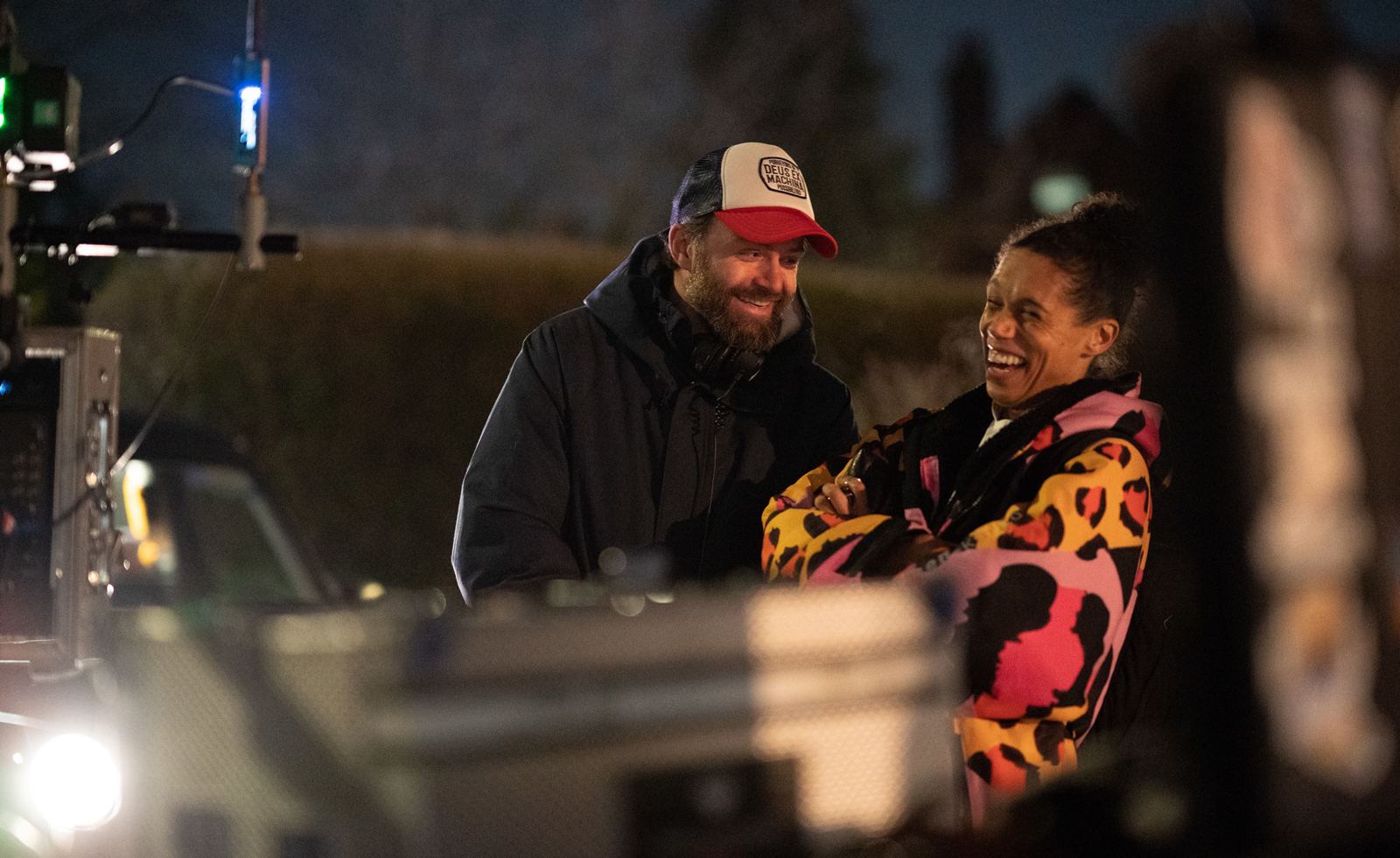
Philip Barantini (Director), Carly (Vinette Robinson). Behind the scenes Episode Number: 1
W*: What can fans of Boiling Point look forward to from the TV series?
PB: People can look forward to exploring the characters that we developed in the feature film and dive deeper into their lives. We’ll meet some new characters that everyone will fall in love with. The whole idea of the series is to shine a light on society and meet these people who are very real and relatable and who are going through struggles that we all do on a daily basis – whether that be mental health or disabilities. Hopefully, we can tickle the audience with what we show them over the four episodes, although we don’t want to tie everything up in a neat little bow – that’s not reflective of life.
Boiling Point is on BBC One and BBC iPlayer
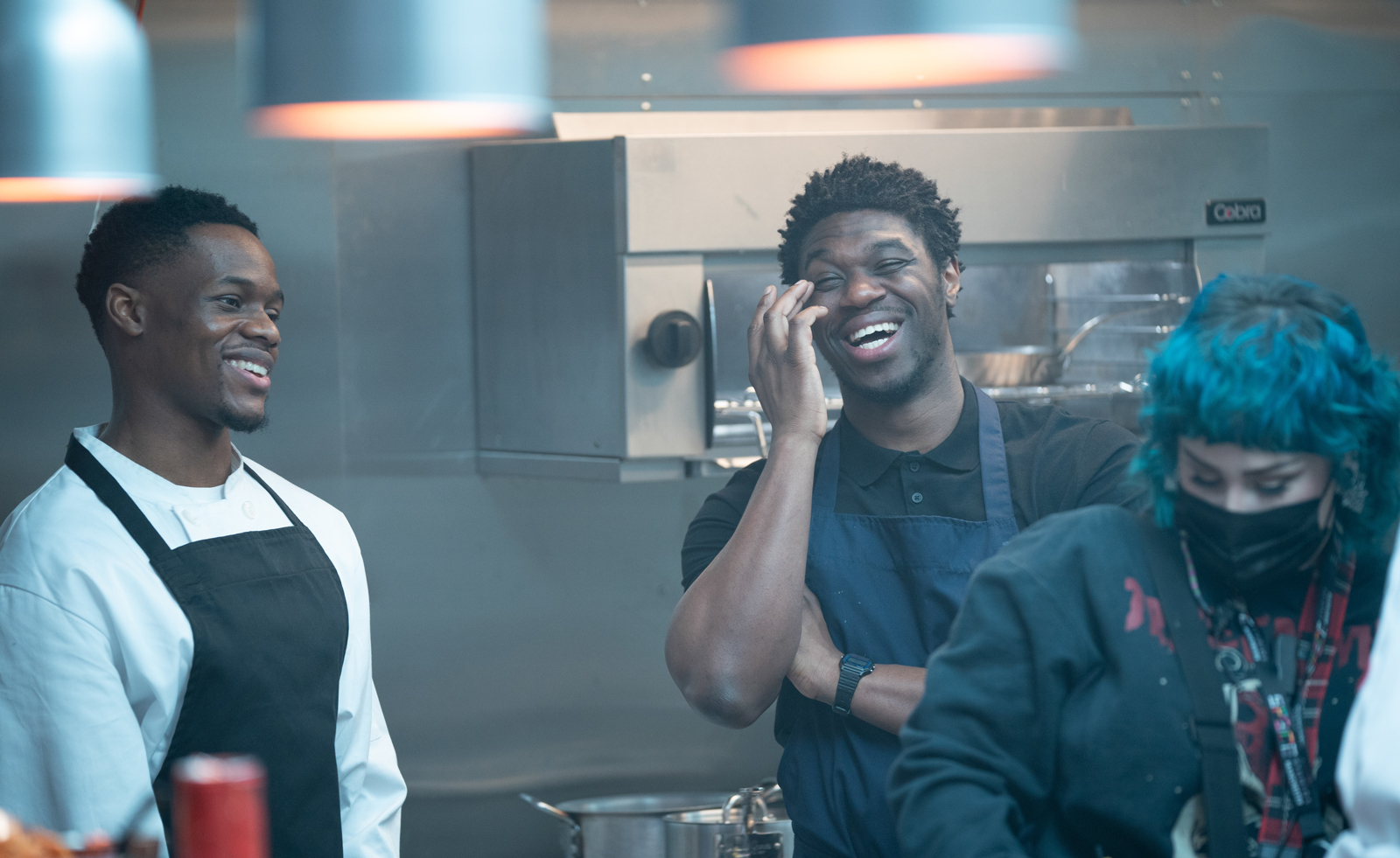
Johnny (STEPHEN ODUBOLA), Jake (DANIEL LARKAI)Behind the scenesEpisode Number: 1Channels: OneCredit: BBC / Boiling Point TV Limited / James StackPhotographer: James StackImage copyright: Boiling Point TV Limited
Hannah Silver is the Art, Culture, Watches & Jewellery Editor of Wallpaper*. Since joining in 2019, she has overseen offbeat design trends and in-depth profiles, and written extensively across the worlds of culture and luxury. She enjoys meeting artists and designers, viewing exhibitions and conducting interviews on her frequent travels.
-
 Extreme Cashmere reimagines retail with its new Amsterdam store: ‘You want to take your shoes off and stay’
Extreme Cashmere reimagines retail with its new Amsterdam store: ‘You want to take your shoes off and stay’Wallpaper* takes a tour of Extreme Cashmere’s new Amsterdam store, a space which reflects the label’s famed hospitality and unconventional approach to knitwear
By Jack Moss
-
 Titanium watches are strong, light and enduring: here are some of the best
Titanium watches are strong, light and enduring: here are some of the bestBrands including Bremont, Christopher Ward and Grand Seiko are exploring the possibilities of titanium watches
By Chris Hall
-
 Warp Records announces its first event in over a decade at the Barbican
Warp Records announces its first event in over a decade at the Barbican‘A Warp Happening,' landing 14 June, is guaranteed to be an epic day out
By Tianna Williams